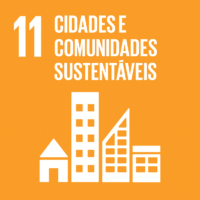Ciência_Iscte
Publicações
Descrição Detalhada da Publicação
Título Revista
IEEE Transactions on Antennas and Propagation
Ano (publicação definitiva)
2008
Língua
Inglês
País
Estados Unidos da América
Mais Informação
Web of Science®
Scopus
Google Scholar
Esta publicação não está indexada no Overton
Abstract/Resumo
This paper presents and compares two new compact lens antenna configurations for data link communications with LEO satellites at 26 GHz. These lenses match a secant type radiation pattern template in the elevation plane while having a mechanically scanned sector beam in azimuth to enhance gain as much as possible. No rotary joints or multiple feeds are required and emphasis is put also on the compactness of the proposed solutions (< 6 lambda). Two alternative lens configurations are evaluated numerically and experimentally: one is based on modified axial-symmetric dome lens geometry, and the other one consists of a full 3-D double-shell lens antenna. In contrast to current nearly omnidirectionnal antennas, the directivity of our lens prototypes is above 15.4 dBi. Up to 4.2 dB loss obtained in the prototypes can be significantly reduced by using lower loss dielectrics and matching layers, without affecting the conclusions. The numerical and experimental results are in good agreement with the radiation specifications given the compact size of the antennas.
Agradecimentos/Acknowledgements
--
Palavras-chave
Beam shaping, Compact lens antennas, Constant flux illumination, Scanning antennas
Classificação Fields of Science and Technology
- Engenharia Eletrotécnica, Eletrónica e Informática - Engenharia e Tecnologia
Contribuições para os Objetivos do Desenvolvimento Sustentável das Nações Unidas
Com o objetivo de aumentar a investigação direcionada para o cumprimento dos Objetivos do Desenvolvimento Sustentável para 2030 das Nações Unidas, é disponibilizada no Ciência_Iscte a possibilidade de associação, quando aplicável, dos artigos científicos aos Objetivos do Desenvolvimento Sustentável. Estes são os Objetivos do Desenvolvimento Sustentável identificados pelo(s) autor(es) para esta publicação. Para uma informação detalhada dos Objetivos do Desenvolvimento Sustentável, clique aqui.

 English
English



